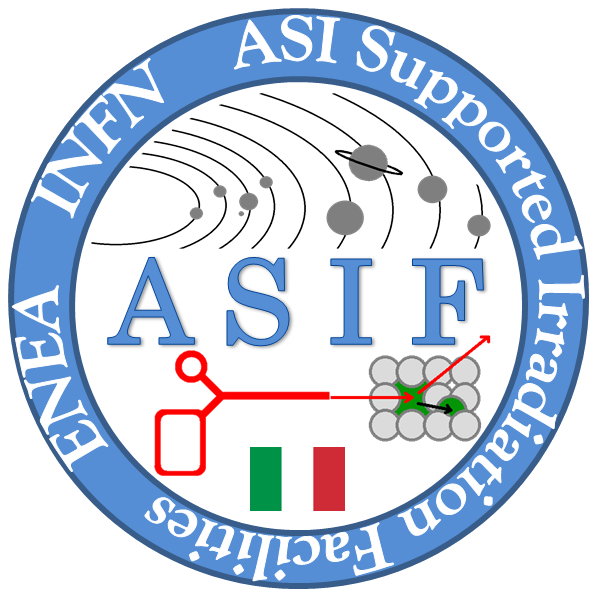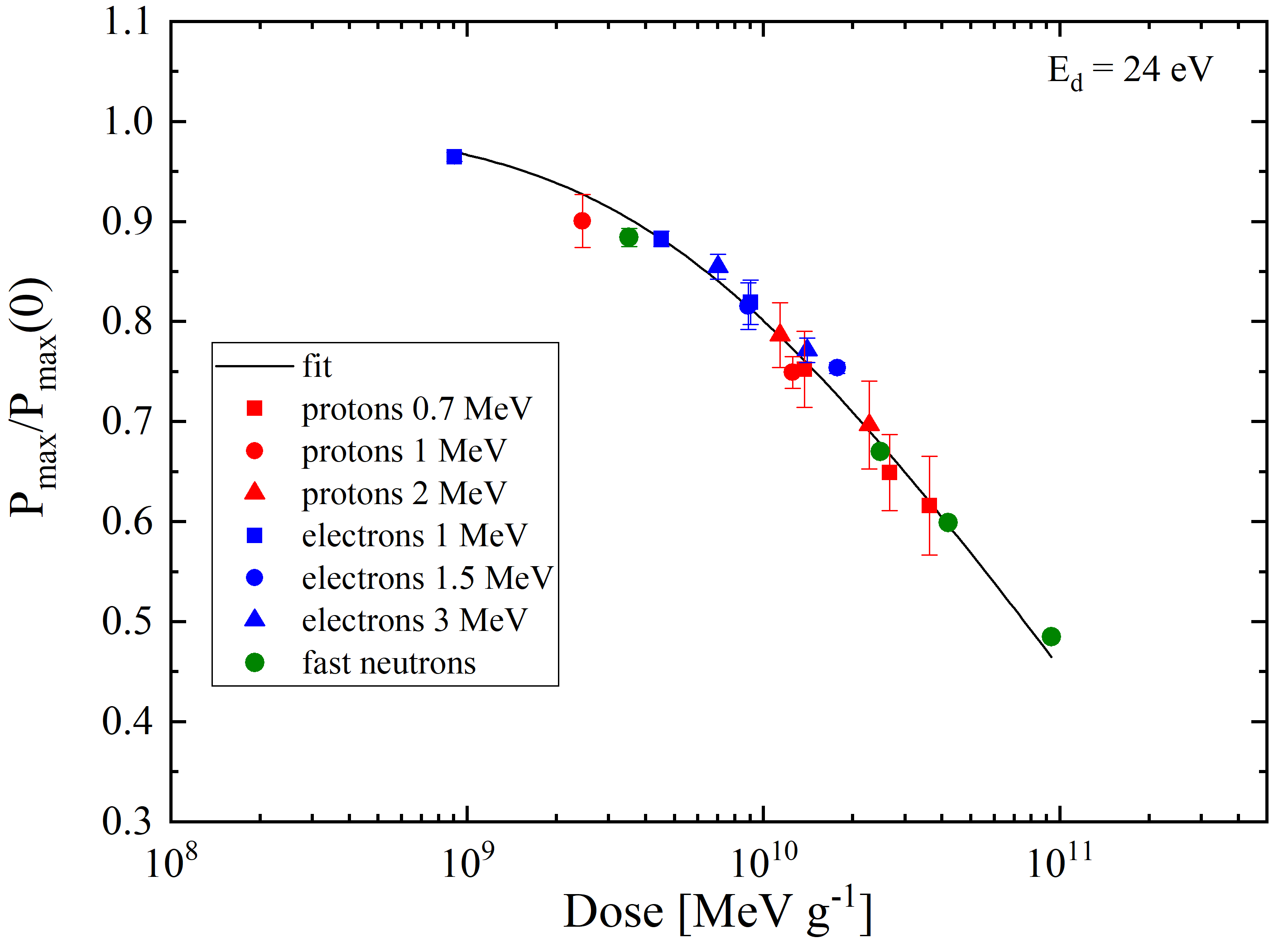In this page, technological and research activities of our laboratory within asif framework is dealt in different sections:
- Displacement (NIEL) doses for space radiation environment and web portals
- Space radiation environment related topics
- Measurement of neutron flux spectra
- ASIF gateway website and operations
- HelMod-4/CUDA and GPU-Farm
Displacement (NIEL) doses for space radiation environment and web portals
The relativistic screening (SR) treatment allows one to deal with the Non-Ionizing Energy Loss (NIEL) of electrons, protons and ions passing through an absorber. NIEL doses, or "displacement damage doses", are provided in the sr-niel website.
Furthermore, in the sr-niel website, online calculators for nuclear stopping powers of electrons, protons, light- and heavy-ions are available. The calculations are carried out based on the screened relativistic treatment for (elastic) Coulomb interactions on nuclei from low up to ultra relativistic energies. In addition, further calculators were specifically developed for asif irradiation facilities.
More pieces of information about sr-treatment are currently available from the website dedicated to the physics of displacement damage, due to neutron, proton, ion and electron interactions on nuclei.
The notation of screened relativistic (SR) NIEL was introduced by Baur et al. (2014). It is treated in Sects. 11.3.1, 11.3.2 of Leroy and Rancoita (2016) and Sect. 2 of Baur et al. (2014). The SR-NIEL is derived from the SR (screened relativistic) nuclear stopping power for electrons (e.g., see Sect. 2.4.3 of Leroy and Rancoita (2016)) and the SR nuclear stopping power for massive particle at relativistic energies (e.g., see Sect.2.2.2 of Leroy and Rancoita (2016)).
The implementation of SR-NIEL treatment and derived SR-NIEL calculators into ESA (European Space Agency) codes (e.g., SPENVIS, GRAS and Mulassis) was accomplished under ESA contract 4000116146/16/NL/HK with title "Non-Ionizing Energy Loss (NIEL) Calculation and Verification" . The sr-niel treatment is also implemented in Geant4 code (see this webpage).
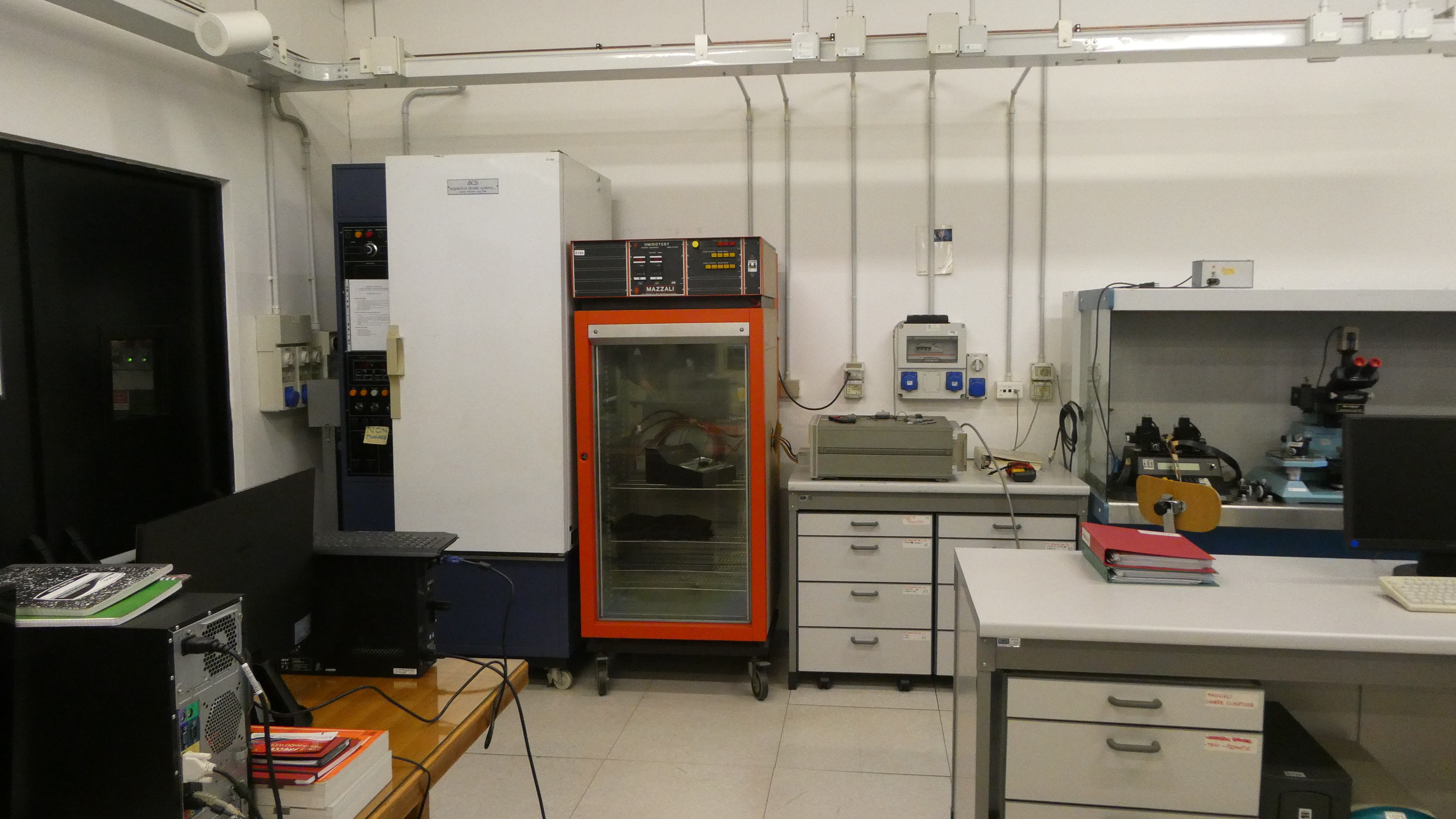
In our laboratory, the sr-niel treatment (e.g., see Leroy and Rancoita (2016)) was gradually developed based on experimental research activities (e.g., see Consolandi et al. (2006)) carried out on displacement damages induced in semiconductors during more than two decades.
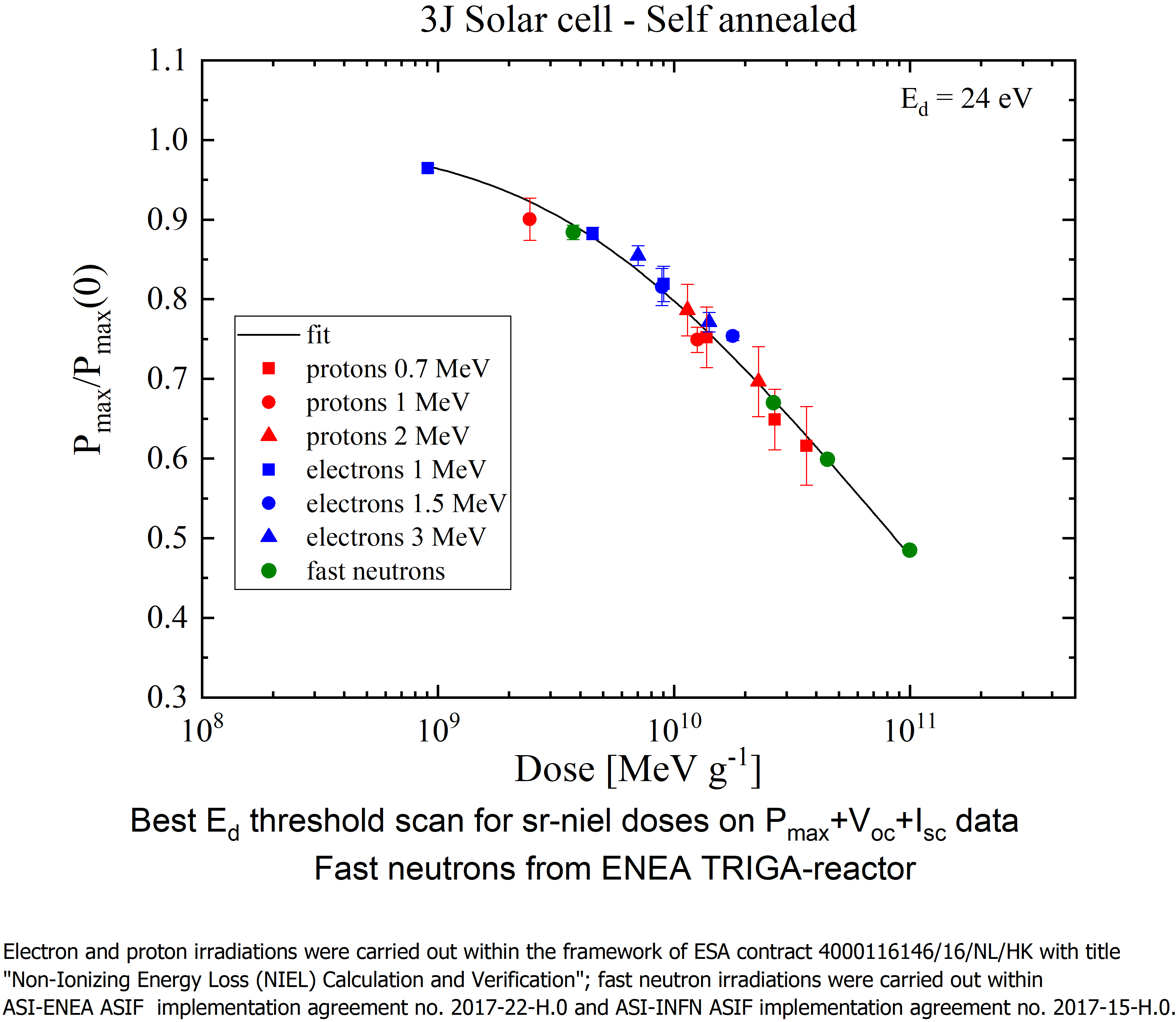
Recently, SR-NIEL treatment allowed NIEL dose calculations for the analysis (carried out in collaboration with CESI S.p.A., e.g., see this webpage) of solar cells degradation due to irradiations with protons, electrons and neutrons.

Part of the current activities is dedicated to support the web sites:
- http://www.asif.asi.it/
- http://www.asifgateway.asi.it
- http://www.sr-niel.org/
- http://www.helmod.org/
- http://www.geomagsphere.org/
Space radiation environment related topics
Heavily massive galactic cosmic rays (GCR) can induce radiation damages due, for instance, to their high LET depositions.The HelMod Codeis capable to account for the long-term variation of cosmic rays intensity along the 11-years solar cycle for protons, nuclei and electrons cosmic rays.

HelMod has demonstrated to be able to reproduce data from inner, up to outer heliosphere (e.g., Boschini et al. (2019) and references therein). Local Interstellar Spectra (LISs) used in HelMod are those obtained from the join GalProp - HelMod effort.

Recently, in HelMod, it was implemented a forecasting capability for protons and ions fluxes, which will result in a better GCR fluxes estimation for future space missions.
Penetration of cosmic rays in the near-earth space is defined by the earth magnetosphere. GeoMagSphere numerical code has the capability to back-trace and recognize cosmic ray particles around and below the local rigidity cut-off (e.g., Bobik et al. (2006)).

[from Boschini et al., 2017]
GeoMagSphere includes the most updated internal field, IGRF-12, and an external magnetic field, which can be selected among Tsyganenko-89, Tsyganenko-96 and Tsyganenko-05.
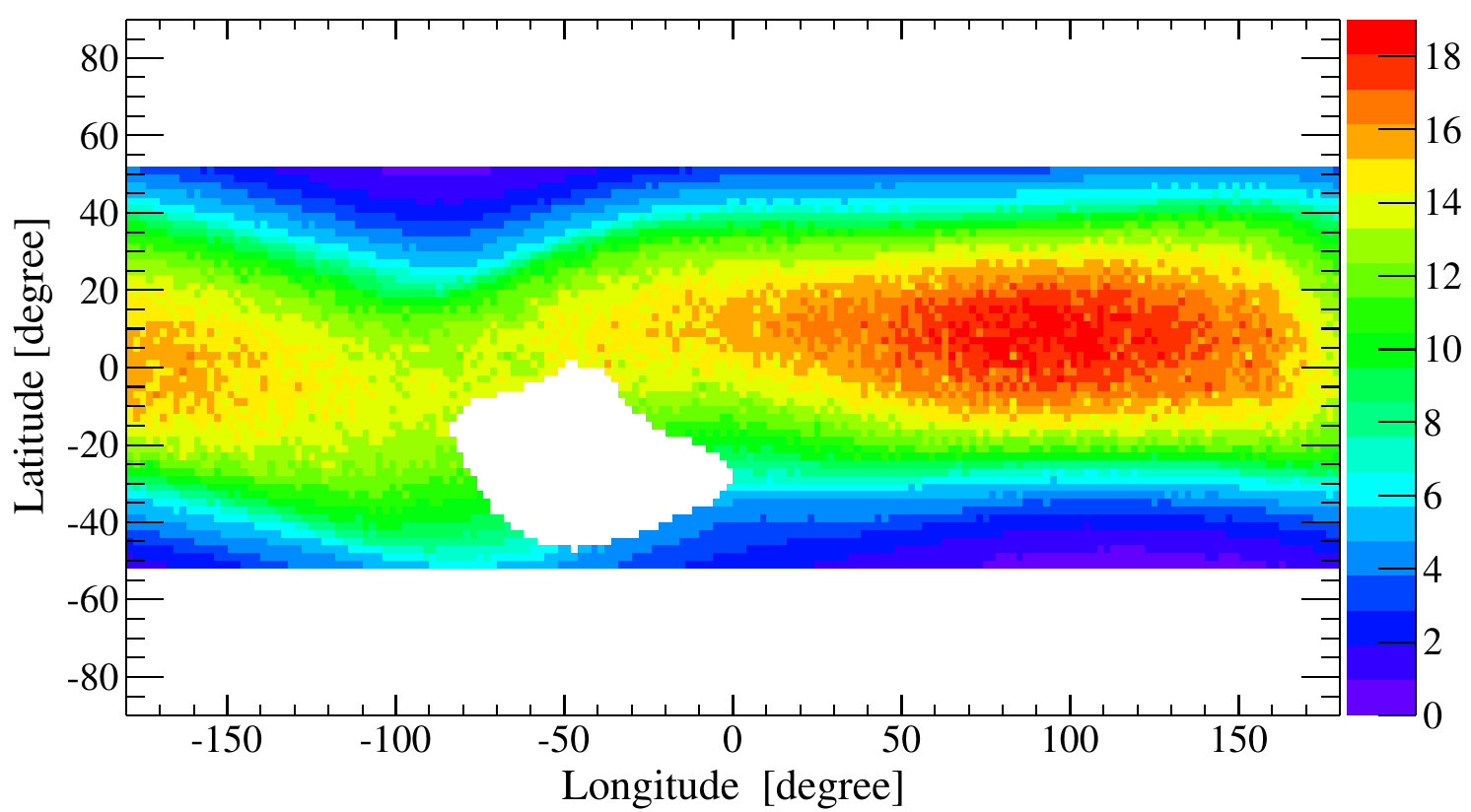
six months of 2012 for particles arriving within 20 deg
from the local zenith [Boschini et al., 2017].
The geomagnetic cutoff, as well as other properties of the magnetosphere, may change with time and depends on the solar activity. Geomagsphere allows one to obtain precise maps of geomagnetic cutoff using IGRF-12 model plus T96 model, replaced during periods of magnetic disturbances by TS05 model.
HelModand GeoMagSpheremodels were born in 1998 by join effort of INFN Milano-Bicocca (Italy) and Institute of Experimental Physics in Kosice (Slovakia).Actually,their results are available for public use trough dedicated website maintained by the ASIF group at INFN Milano-Bicocca (Italy).
Measurement of neutron flux spectra
Using neutrons to study radiation damage effects has the advantage to provide uniform dose in relatively large volume and short irradiation time. To get accurate evaluation of dose, neutron fluence and energy spectrum must be measured and characterized.
The methodology, developed and tested at TRIGA Mark II reactor in Pavia, is based on neutron activation measurements of samples made of various elements [Borio di Tigliole et al. (2014)]. The neutron flux spectrum is unfolded using experimental data of activation rates and corresponding cross sections [Chiesa et al. (2018), Chiesa et al. (2014)]. Moreover, the spatial characterization of neutron flux with Al-Co activation monitors [Chiesa et al. (2015)].
In 2018, we characterized two irradiation facilities (Central Thimble and Lazy Susan) of the TRIGA RC-1 reactor at ENEA Casaccia Research Center (Fig. 1).

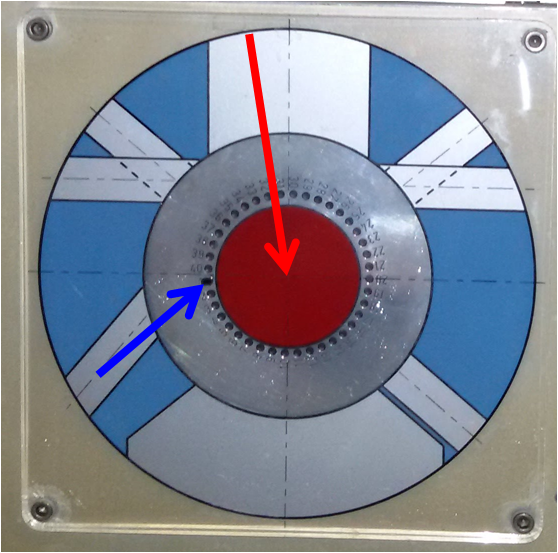
Fig. 1. Top view of the TRIGA reactor pool (left) and horizontal split of the reactor core (right). Red/blue arrows show the position of Central Thimble and Lazy Susan irradiation facilities, respectively. As shown in the right panel, Lazy Susan is a rack with 40 positions around the reactor core.
The samples to be activated with neutrons have been prepared at Milano – Bicocca using liquid standards with certified concentration of trace elements, high purity metal foils, and Al-Co (Co 0.5% wt.) wires (Fig. 2). Each sample was weighted on a precision balance to get accurate evaluation of the amount of target isotopes.



Fig 2. Pictures of the samples: liquid (left), metal foil (center) and Al-Co wire (right). The samples were contained in PET vials that have been packed and stacked in aluminum/plastic holders for the irradiations in Central Thimble/Lazy Susan, respectively.
We installed and set-up two HPGe detectors at ENEA – Casaccia laboratory for γ-spectroscopy of activated samples (Fig. 3) and we performed benchmark measurements with calibration sources containing isotopes of known activity to characterize γ-detection efficiency in a wide energy range from 59 keV to 1408 keV.


Fig 3. HPGe detectors used for γ-spectroscopy measurements.

We developed a Monte Carlo (Geant4 based) simulation model of HPGe detectors, that allows to simulate the decays of all isotopes and to determine the absolute activity of the activated samples (Fig. 4).
We irradiated the samples in Central Channel and Lazy Susan facilities at 100 kW thermal power and we recorded the power track to allow a precise calculation of net irradiation time (Fig. 5).

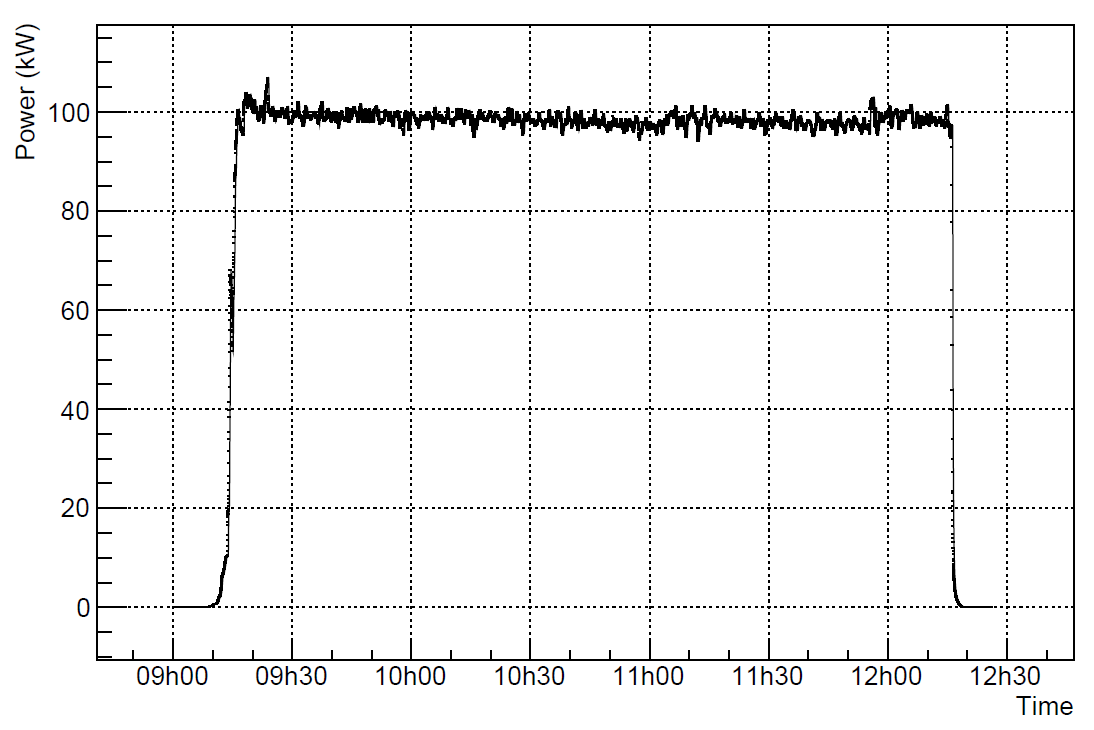
Fig 5. The reactor control room (left) and the power track of an irradiation (right).
We performed γ-spectroscopy measurements of activated samples for about one month after irradiations, in order to measure both short-lived and long-lived isotopes. Most samples were independently measured on both HPGe detectors to achieve a better control of systematic uncertainty in activation rate evaluation.
We measured the activation rates of about 40 neutron-induced reactions and we performed the spectrum unfolding to determine the intensity of the neutron flux in properly-defined energy ranges from thermal to fast neutrons (Fig. 6).

Fig 6. Result of neutron spectrum unfolding of Lazy Susan facility. The flux spectrum is represented using the lethargic scale, with flux in units of n/(cm2s).
